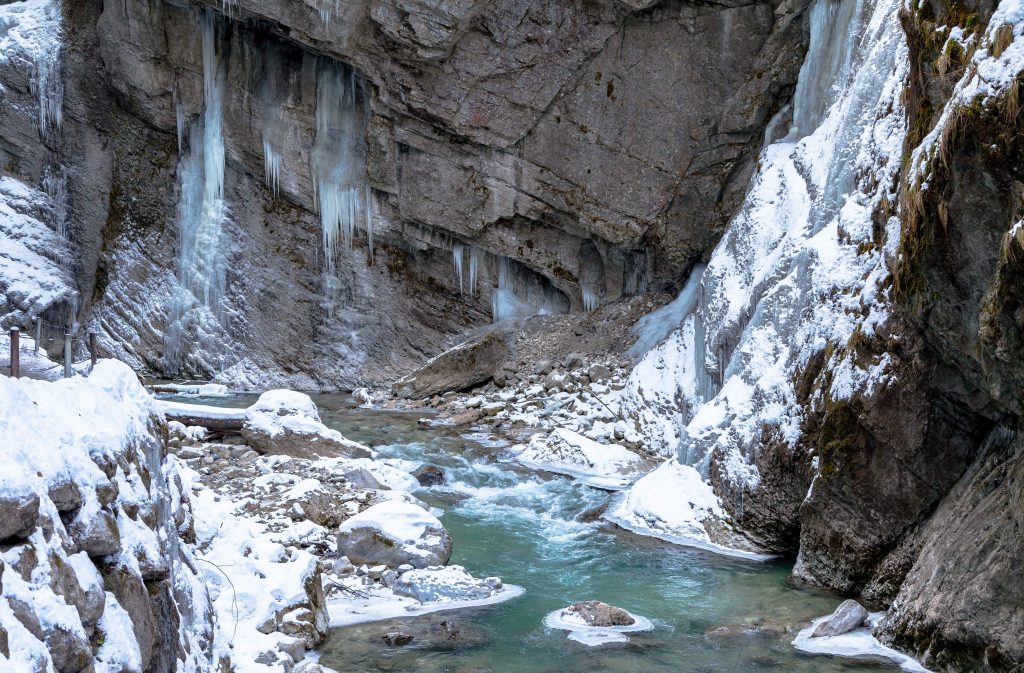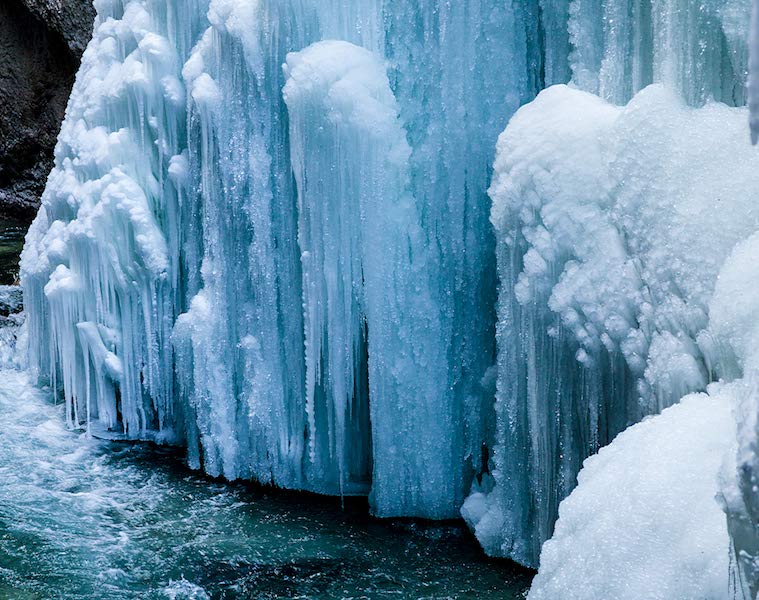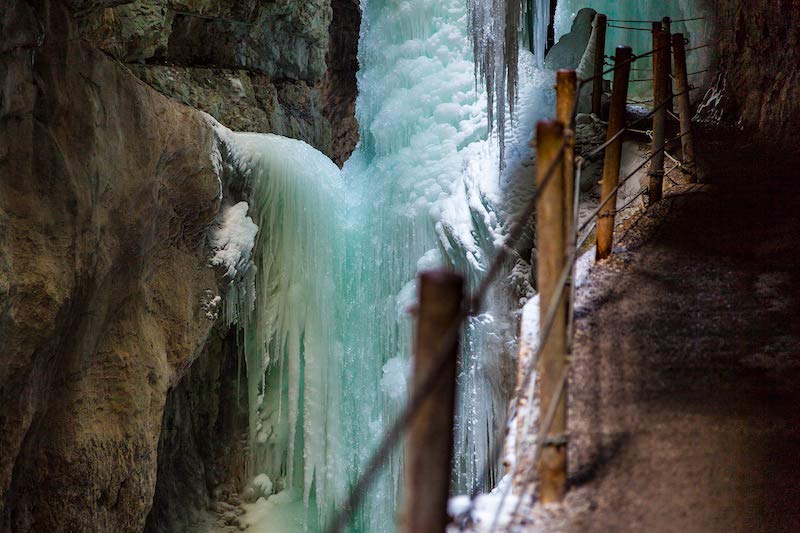Die zauberhaften Gumpen von Oberstaufen: Buchenegger Wasserfälle
Im Südwesten von Bayern findet sich einer der spektakulärsten Plätze in den nördlichen Alpen: Die Buchenegger Wasserfälle mit zwei großen türkisfarbenen Gebirgswasserbecken (Gumpen) und einem mächtigen Wasserfall mit kristallklarem Wasser. Sie sind ein imponierender Anblick und ein unvergessliches Erlebnis.
Die Buchenegger Wasserfälle sind ein hervorragendes Fotomotiv. Selbstverständlich ist man dort am Wochenende nicht allein. Das liegt nicht nur daran, dass es etwas zu sehen gibt, sondern an einem fünf Meter tiefen Wasserbecken, in dem man auch schwimmen kann. Allerdings verlassen die meisten diesen Naturpool schnell wieder, denn auch im Juli und August ist das reine Gebirgswasser ziemlich frisch. Dazu kommen noch einige mutige junge Leute, die die Tradition des Gumpenjuckens pflegen: Sie springen aus Höhen von bis zu 30 Meter in den Pool. Es liegt ein Gefühl von Acapulco in der Luft.
Die Buchenegger Wasserfälle sind Teil eines beeindruckenden Tals, das der Fluß Weißach in den Fels geschnitten hat. Die Weißach kommt aus der Gegend des Hochgrats und fließt zwischen den Orten Buchenegg und Steibis den Berg hinunter. Weiter unten erreicht der Fluß Oberstaufen, einen hervorragenden und sehr bekannten Tourismus-Ort. Es gibt dort zahlreiche Hotels und Attraktionen. Die Landschaft ist hier eigentlich nicht so dramatisch wie in manchen anderen Teilen der Bayerischen Alpen. Deshalb ist der steile Canyon, in dem die Weißach fließt, ein überraschender Kontrast und trägt so zu einem unvergesslichen Bergerlebnis bei.
Oberstaufen kann man mit dem Zug oder mit dem Auto erreichen. Die Züge verkehren häufig. Es liegt im westlichen Allgäu nicht weit von Kempten und vom Bodensee. Auch die österreichische Grenze ist in direkter Nähe.
Es gibt zwei Wege, die zu den Buchenegger Wasserfällen führen. Ein Pfad beginnt am Parkplatz oberhalb von Buchenegg (eine sehr enge Bergstraße führt dort hinauf, wo es zudem oft schnell voll ist – deshalb kann diese Route insbesondere für bergunerfahrene Autofahrer nicht empfohlen werden. Besser man sucht sich einen Parkplatz im gegenüberliegenden Ort Steibis). Es gibt einen weiteren Grund dafür, besonders für wenig erfahrene Wanderer: Der Pfad von Buchenegg ist zwar in einem hervorragenden Zustand, aber sehr steil. Wenn man nicht trittsicher in abschüssigem Gelände oder nicht schwindelfrei ist, sollte man unbedingt den Wanderweg nehmen, der von Steibis kommt. Dieser ist kürzer und die meiste Zeit leicht zu gehen.
Man kann von Oberstaufen auch den Bus nach Steibis nehmen und bei der Haltestelle “Berggaststätte Hirsch” aussteigen. Bevor dieser schöne Wanderweg die Schlucht erreicht, kommt man an zwei sehr idyllischen Almen vorbei. Eine von ihnen ist die Neugreuth Alm, die andere ist die Neugschwend Alpe. Sie eignen sich hervorragend als Rastplatz vor dem Abstieg und man bekommt dort sehr gutes Essen.
.
p>
Der Weg in die Schlucht ist vom ersten Augenblick an sehr beeindruckend. Es ist nicht nur der wilde Fluß, die felsigen Abhänge und der Wasserfall, die dieses Erlebnis prägen. Im Tal existiert bis heute ein urwaldähnlicher Bergwald mit einer Vielzahl von Baumarten und Pflanzen. Dieser Wald trägt zur unvergleichlichen Szenerie bei und bietet weitere attraktive Motive.
Die beste Zeit, diese fantastische Atmosphäre einzufangen, ist im Sommer, auch wenn da viele Leute unterwegs sind. Die Morgenstunden sind dabei immer noch eine günstige Zeit, da es dann noch nicht so voll dort ist.
Wer dort fotografieren will, sollte ein paar Sachen beachten: Steht man vor der großen Gumpe mit dem Wasserfall ist die Kamera nach Süden gerichtet. Man hat also harte Kontraste und Gegenlicht. Außerdem geht vom großen Wasserfall ein feiner Sprühfilm aus, besonders wenn es windig ist. Man hat schnell feine Wassertropfen auf dem Objektiv. Daher empfiehlt es sich, intensiv die Linse zu checken und zu reinigen. Schließlich ist wichtig, auf den Untergrund zu achten, da es hier und dort rutschig sein kann.

































